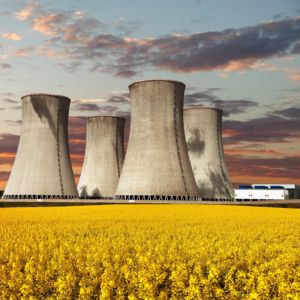For India, nuclear power means more than just another electricity source. Energy is critical for the alleviation of poverty in India, and nuclear energy will play a major role in meeting the country’s huge energy demand — propelling its industries and giving access to safe, affordable, reliable energy to its many impoverished people.
As the country desperately seeks to seal its energy security, nuclear energy acts as the go-to energy source of the coming decades. Nuclear energy is the fourth-biggest source of electricity generation in India, next only to extremely reliable coal-powered energy, gas and hydroelectric energy.
What may seem odd to Westerners is that it is not the United States or Europe helping raise people out of abject poverty through nuclear energy, it’s Russia.
In early August, Russia’s Vladimir Putin inaugurated the Kudankulam Nuclear Power Plant’s (KKNPP) first reactor unit in India through a video conference from Moscow. The KKNPP is part of a deal signed between India and Russia in 1998, and built by the Russian nuclear corporation Rosatom State Atomic Energy Corp.
The conference signaled the official inauguration of the unit’s first reactor at KKNPP, which has been fully functional since December 2014 with a generating capacity of 1,000 megawatts.
The first two reactor units at KKNPP cost $2.62 billion. The third and fourth reactors (1,000 megawatts each) are already under construction and are projected to be completed by 2023-24 at an estimated cost of $6.06 billion, and more reactors are being planned.
But India’s nuclear ambition is not limited to KKNPP. Last December, India and Russia also discussed plans for constructing 15 more nuclear reactors in the country, in addition to the previously existing 21 reactors.
Indian Prime Minister Narendra Modi said, “In the years ahead we are determined to pursue an ambitious agenda of nuclear power generation. At Kudankulam alone, five more reactors of 1,000 (megawatts) each are planned. In terms of our cooperation with Russia, we plan to build a series of bigger nuclear power plants.”
In order to achieve its larger goals, India has made new partnerships beyond its current nuclear partnership with Russia. In June, India and the United States showed keen interest in negotiating a deal to clinch six new nuclear reactors.
Nuclear Power Corp. of India, (the government-owned corporation of India responsible for the generation of nuclear power for electricity), and Electricite de France (EDF, the French state-owned electricity generating body) also made a deal to set up six reactors in India’s richest state Maharashtra.
India’s atomic energy minister, Jitendra Singh, announced in August that Westinghouse Electric Co. of the United States, GE-Hitachi Nuclear Energy Inc. (United States), EDF (France), and Rosatom State Atomic Energy Corp. (Russia) — are all keen to undertake nuclear projects in India.
The major challenge going forward will be obtaining the raw material for these nuclear projects. India depends heavily on Russia, Canada and Kazakhstan for its uranium requirements. Only eight of the country’s 21 reactors use indigenous uranium.
India’s nuclear power capacity is estimated to triple in seven years if all its nuclear plans succeed — achieving its ambitious 20 gigawatt nuclear energy target.
The potential contribution and the immense necessity of nuclear energy in India was elaborately portrayed in the works and speeches of the late Dr. A.P.J. Abdul Kalam — India’s most renowned nuclear scientist of the 20th century, who was also India’s 11th president.
Dr. Kalam fervently and aggressively advocated for the KKNPP and other nuclear projects, in spite of heavy opposition from various pseudo-scientific green entities (both local and international) that oppose government energy policies that are directed at alleviating poverty in India.
He once asked, “Will we allow an accident in Japan, in a 40-year-old reactor at Fukushima, arising out of extreme natural stresses, to derail our dreams to be an economically developed nation?”
The answer, fortunately, is no!
The environmentalists’ attempts to create a nuclear-crippled India have failed. The misguided rhetoric surrounding Fukushima and nuclear safety has not deterred the country from using this incredible energy source.
An energy independent India is on the horizon, and electricity generated through nuclear reactors is set to be a significant factor.

